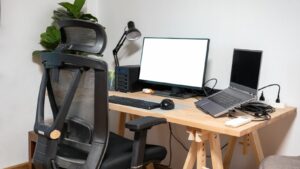In today’s digitally-driven world, the intersection of technology and wellness has never been more critical. As screens become ubiquitous in our daily lives, the concept of “tech wellness” is emerging as a vital area of focus. This movement isn’t just about reducing screen time; it’s about harnessing the power of technology to enhance our well-being, ensuring our interactions with digital devices contribute positively to our physical and mental health.
Tech Wellness
Tech wellness focuses on optimizing the relationship between individuals and their digital environments. It fosters habits that promote health and satisfaction with technology use.
What is Tech Wellness?
 Tech wellness refers to the intentional practices that enhance an individual’s health and well-being in the digital age. It involves strategies to ensure technology use contributes positively to physical, mental, and emotional health. Techniques under tech wellness include setting boundaries for digital consumption, using ergonomic tools at workstations, and engaging in regular digital detoxes. This approach helps individuals use technology as a tool to support their lifestyle rather than a distraction or a source of stress.
Tech wellness refers to the intentional practices that enhance an individual’s health and well-being in the digital age. It involves strategies to ensure technology use contributes positively to physical, mental, and emotional health. Techniques under tech wellness include setting boundaries for digital consumption, using ergonomic tools at workstations, and engaging in regular digital detoxes. This approach helps individuals use technology as a tool to support their lifestyle rather than a distraction or a source of stress.
In today’s rapidly evolving digital landscape, tech wellness is crucial. It helps mitigate the risks associated with prolonged technology use, such as digital eye strain, poor posture, and tech-induced stress. By incorporating tech wellness strategies, individuals can maintain a healthy balance between their digital and non-digital lives. This balance is essential, not only for reducing physical ailments like neck pain or headaches but also for enhancing emotional stability and fostering a more mindful approach to digital engagement.
Key Components of Tech Wellness
Digital Detoldes and Its Benefits
 Digital detox involves temporarily stepping away from digital devices to reduce stress and improve personal interactions. When people disconnect from their devices, they often experience enhanced mental clarity, better sleep, and improved relationships. Regular digital detoxes help maintain a healthier balance between online and offline worlds, fostering greater presence and mindfulness in daily activities.
Digital detox involves temporarily stepping away from digital devices to reduce stress and improve personal interactions. When people disconnect from their devices, they often experience enhanced mental clarity, better sleep, and improved relationships. Regular digital detoxes help maintain a healthier balance between online and offline worlds, fostering greater presence and mindfulness in daily activities.
Incorporating ergonomics in the workplace involves designing workspaces and using tools that promote efficiency while minimizing discomfort and the risk of injury. Ergonomic chairs, adjustable desks, and computer screens positioned at eye level are examples of ergonomic practices that support proper posture and reduce the risk of strain injuries. As a result, productivity increases and employees experience fewer health issues related to the overuse of technology.
Technological Tools Promoting Wellness
Technological tools aimed at promoting wellness enhance users’ health by integrating technology thoughtfully into daily routines. These tools range from software applications that remind users to take breaks, to devices designed to improve posture and reduce physical strain.
Mobile Apps for Mental Health
Mobile apps like Headspace and Calm offer guided meditations that aid in reducing stress and improving sleep quality. Users who engage regularly with such apps have reported significant improvements in their mental well-being. These tools provide an accessible way to manage mental health, supported by features like mood tracking and personalized meditation programs.
Wearable Fitness Trackers
 Devices such as Fitbit and Apple Watch monitor physical activity and provide feedback on individual health metrics like heart rate, sleep quality, and steps taken. They motivate users to maintain an active lifestyle, directly impacting their physical fitness and overall health. Through real-time data, these trackers also help users make informed decisions about their daily activity levels and exercise routines.
Devices such as Fitbit and Apple Watch monitor physical activity and provide feedback on individual health metrics like heart rate, sleep quality, and steps taken. They motivate users to maintain an active lifestyle, directly impacting their physical fitness and overall health. Through real-time data, these trackers also help users make informed decisions about their daily activity levels and exercise routines.
Ergonomically designed office equipment, including standing desks and ergonomic keyboards, plays a crucial role in reducing the risk of strain injuries. These tools contribute to better posture and decreased discomfort during long hours of tech use, thereby enhancing productivity and wellness in work environments.
Software Solutions for Eye Health
Software solutions like f.lux and Iris adjust a computer screen’s brightness and color temperature according to the time of day. Such adjustments can significantly mitigate digital eye strain, especially with prolonged use, thus promoting better eye health and more comfortable technology use.
By incorporating these technological tools, individuals improve their overall well-being while minimizing the adverse effects associated with extensive technology use. As tech wellness continues to evolve, these tools become pivotal in managing and enhancing individual health in a digitally driven world.

